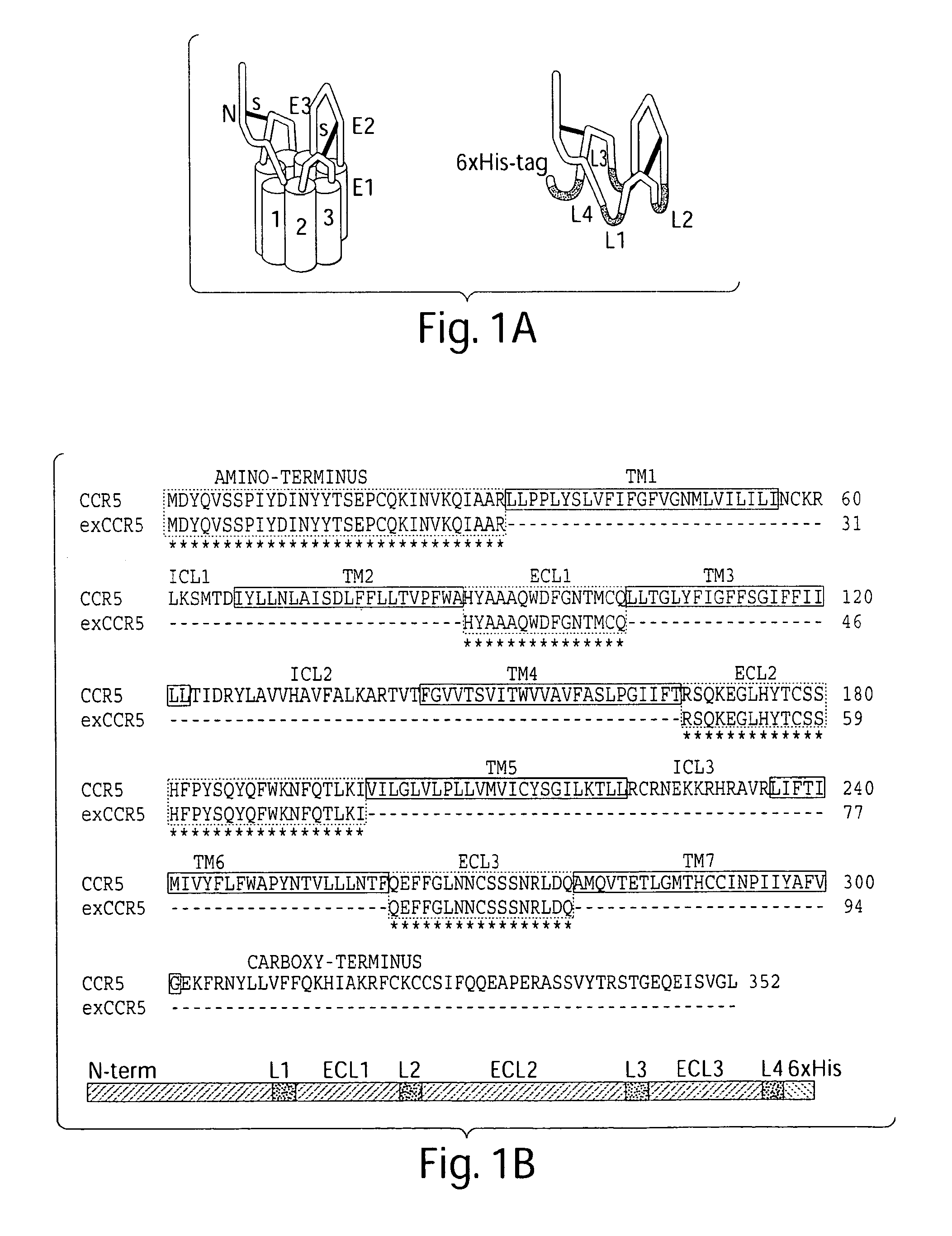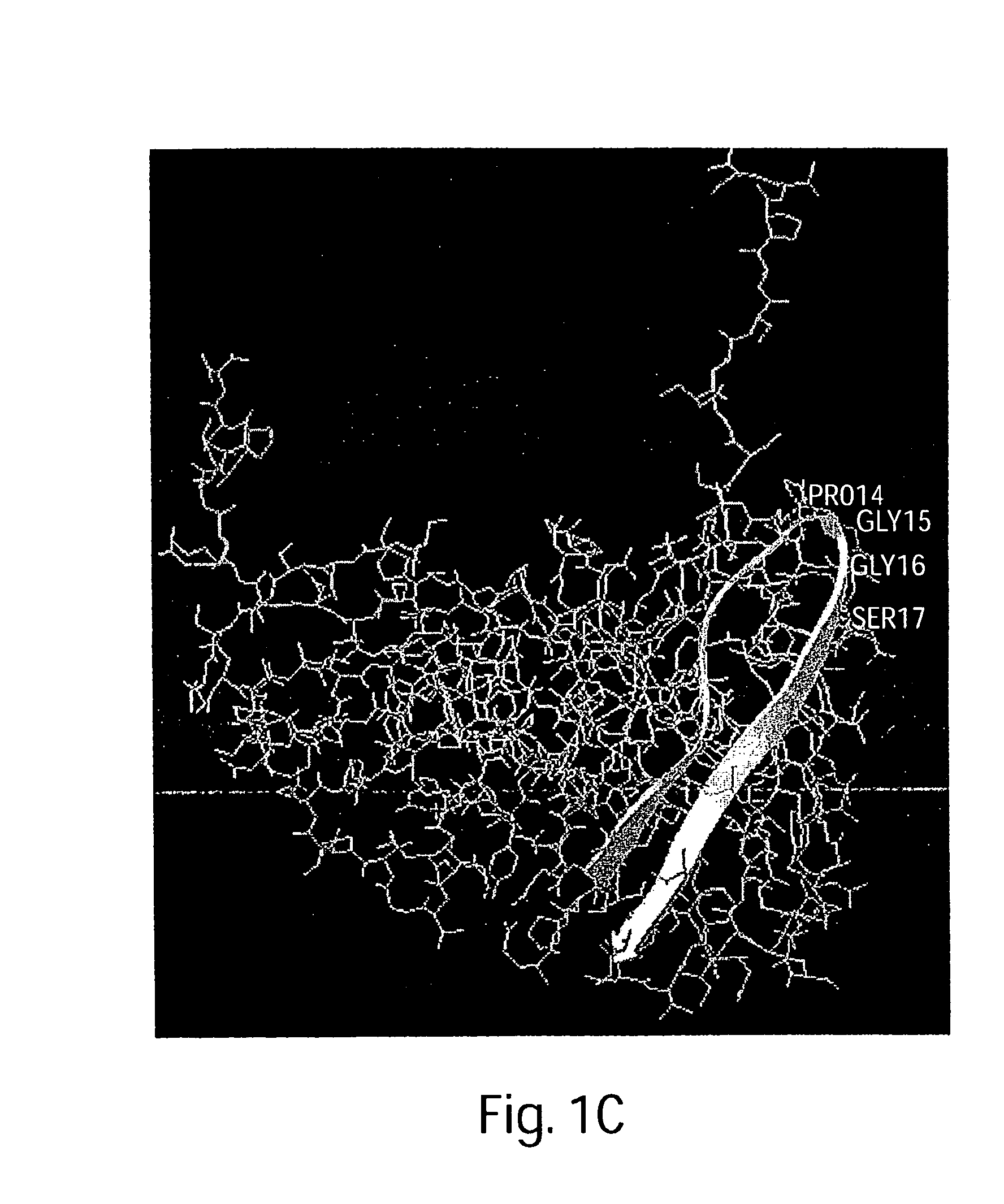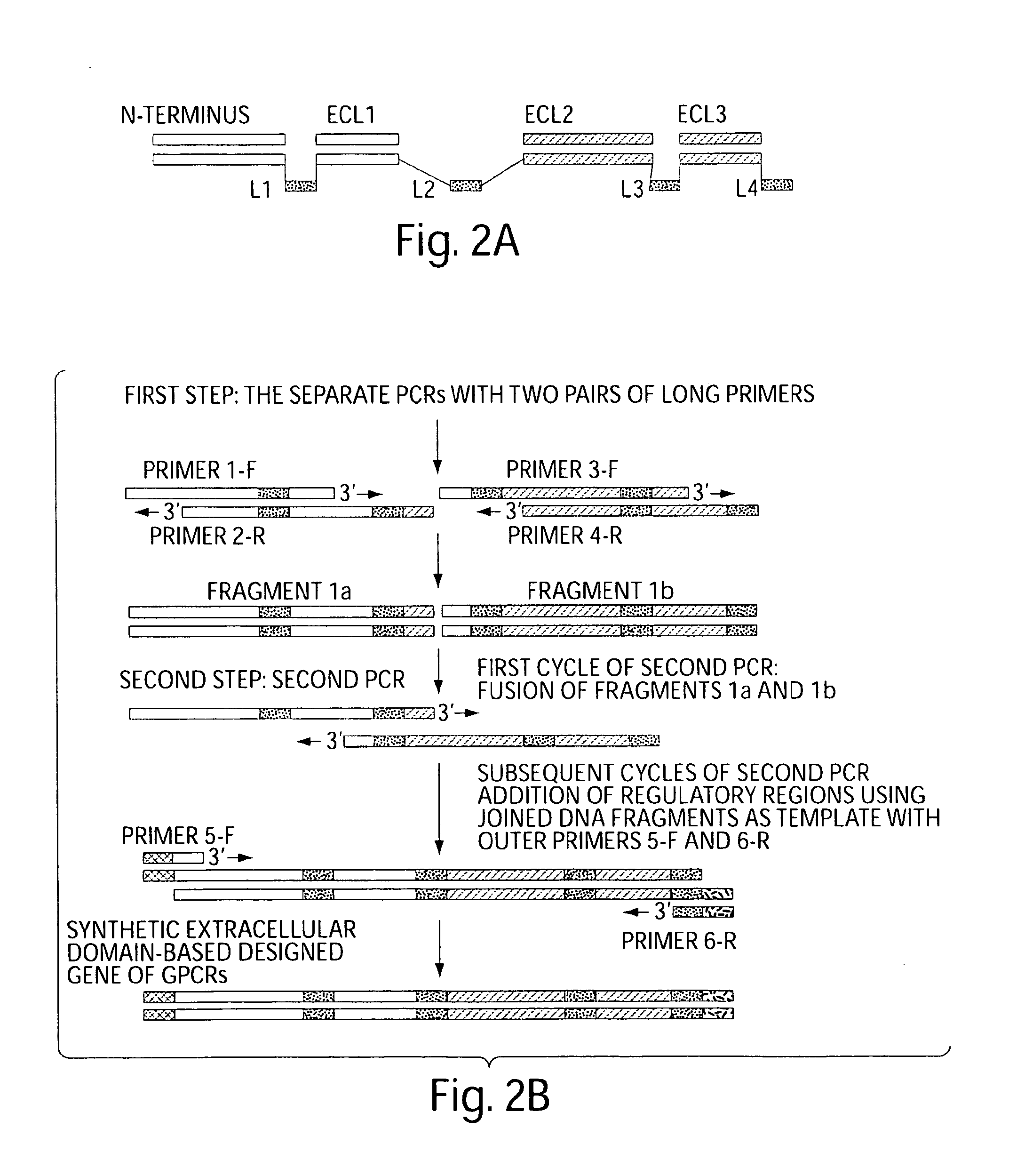Strategy for cloning and expressing the extracellular domains of receptors as soluble proteins
a technology of soluble protein and receptor, which is applied in the direction of peptides, cardiovascular disorders, drug compositions, etc., can solve the problems of inability to find cognate ligands, difficult to determine experimentally their 3d structure, and little information about the detailed molecular structur
- Summary
- Abstract
- Description
- Claims
- Application Information
AI Technical Summary
Benefits of technology
Problems solved by technology
Method used
Image
Examples
example 1
Design of Common Extracellular Domain Unit of Soluble CCR5 Chimera
[0231]In the present work, we have focused on the solvent-exposed extracellular loop segments of the CCR5 chemokine receptor. Like other members of group 1b GPCRs, CCR5 contains an N-terminus and 3 ECL domains. There are four cysteine residues that form two disulphide bonds. The previous biochemical and genetic studies demonstrated that CCR5 interacts with chemokines and HIV-1 through an exposed extracellular structural motif comprising part of the N-terminus and ECL1, ECL2 domains (Olson, W. C. et al., 1999; Blanpain, C. et al., 1999; Dragic, T. et al., 1998; Farzan, M. et al., 1998).
[0232]It was hypothesized that all extracellular domains of CCR5 could fold independently of the TM helices and would functionally mimic the extracellular surface of an intact CCR5 chemokine receptor by interacting with various protein targets. Accordingly, a soluble exCCR5 molecule to satisfy the following criteria was designed: (1) It ...
example 2
Design of Interdomain Linkers
[0234]The second (but equally important) consideration was the choice of linker sequence to be placed between the N-terminus and the extracellular loops (and a 6xHis tag) in order to afford some degree of conformational flexibility. Control of structural flexibility is essential for the proper functioning of a large number of proteins and multiprotein complexes. At the residue level, such flexibility occurs due to local relaxation of peptide bond angles whose cumulative effect may result in large changes in the secondary, tertiary or quaternary structures of protein molecules. Linkers are thought to control favorable and unfavorable interactions between adjacent domains by means of variable flexibility furnished by their primary sequence.
[0235]Chemokine receptors, including CCR5, share two additional cysteine residues (compared to other GPCR families) which are thought to form a disulfide bond between the N-terminus and the third extracellular loop resul...
example 3
The Extracellular Domain-Based PCR Strategy to Generate a Fusion Protein from Four Extracellular Domains of exCCR5
[0237]The next step in the preparation of exCCR5 chimera was the design of a PCR strategy. The strategy described here can be used to generate a fusion protein from four extracellular domains of other members of GPCRs and is based on a rational design of long internal primers for ECL domains and linkers. Typically, the extracellular loops 1 and 3 (ECL-1 and ECL-3) are relatively short and may mainly connect transmembrane helices, while the N-terminal segment and ECL-2 are significantly longer. The design of amino acid sequences and lengths of the connecting linkers can vary but there are some important restrictions for linker engineering. The linkers must control the distance between domains, orientation, and relative motion of functional domains.
[0238]The technique joins the coding sequences of extracellular domains of chemokine receptor CCR5 (N-ter, ECL1, ECL2, ECL3) a...
PUM
| Property | Measurement | Unit |
|---|---|---|
| pH | aaaaa | aaaaa |
| pH | aaaaa | aaaaa |
| molecular mass | aaaaa | aaaaa |
Abstract
Description
Claims
Application Information
 Login to View More
Login to View More - R&D
- Intellectual Property
- Life Sciences
- Materials
- Tech Scout
- Unparalleled Data Quality
- Higher Quality Content
- 60% Fewer Hallucinations
Browse by: Latest US Patents, China's latest patents, Technical Efficacy Thesaurus, Application Domain, Technology Topic, Popular Technical Reports.
© 2025 PatSnap. All rights reserved.Legal|Privacy policy|Modern Slavery Act Transparency Statement|Sitemap|About US| Contact US: help@patsnap.com



